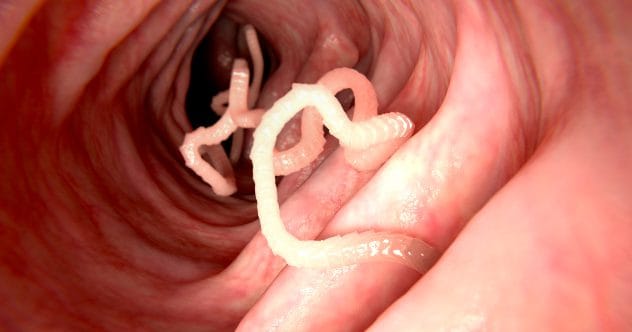Medicine has made incredible progress. We benefit from the best medical science and technology in history. Curing diseases isn’t always about scientists in labs. Sometimes, it’s just plain weird!
When battling diseases, scientists try almost anything. Cures can come from the most unexpected places. Sometimes, the human body even heals itself miraculously. A disease cured is a victory, no matter how strange the story.
10. Allergies—Parasitic Worms
Since the 1970s, scientists saw a link between parasitic worm infections and fewer allergies. Hookworm infections often reduced hay fever, even if someone had it before. For some, hookworms could cure allergies.
But it’s not a guaranteed fix for everyone. Many trials showed no allergy relief from worm infections. Yet, some scientists have even swallowed hookworms themselves and been cured of hay fever for years!
9. Blindness—Reengineered Viruses
Researchers are using viruses to cure congenital blindness. A team at the University of California Berkeley used viruses to almost completely cure monkeys of X-linked retinoschisis and Leber’s congenital amaurosis.
These diseases involve a non-working gene needed for eyesight. The team put working copies of the gene into viruses and injected them near the retina. The viruses then injected their genetic material, including the working eye gene, into the retinal cells. The monkeys’ eyesight returned to almost normal!
8. Mental Illness—A Laser Lobotomy
Lobotomies might seem like a thing of the past. But with new technology and better brain knowledge, psychosurgeries are back.
These surgeries are controversial but effective. Doctors use lasers to target small brain areas that cause unwanted behavior, like OCD. It’s a last resort, but it works. Over half of patients recover completely.
7. Bacterial Infection—A Poop Transplant
C. diff. (Clostridium difficile colitis) is a serious condition where gut bacteria are unbalanced. Usually after antibiotics, the good bacteria die, and C. diff. takes over. Sometimes, more antibiotics help, but often a poop transplant is needed.
During a colonoscopy, doctors insert fecal matter from healthy donors into the colon. This resets the gut microbiome. As weird as it sounds, it’s effective!
6. Cardiac Arrest—Intentional Hypothermia
Cardiac arrest is life-threatening. The heart’s electrical system malfunctions, stopping its beating. Even if the heart restarts, brain damage from lack of oxygen is common.
Doctors now induce hypothermia. They lower the body temperature to 89-93 degrees for about a day. This prevents brain damage and improves the chance of waking up.
5. Necrosis & Gangrene—Maggots
Using maggots to eat dead tissue seems old-fashioned. But like lobotomies, maggots are making a comeback.
Maggots were replaced by antibiotics. Now, with antibiotic resistance, they’re used again. Doctors use maggots for necrosis when antibiotics don’t work. They remove dead tissue, preventing it from spreading and even preventing amputation.
4. Skin Cancer—Herpes
Melanoma is a dangerous, fast-spreading skin cancer. A modified version of the herpes virus is showing promise as a treatment.
Researchers at UCLA used the modified virus to treat advanced melanoma. The virus targets cancer cells, attracting immune cells and killing the cancer directly. Patients who received the modified herpes with cancer meds fared better than those on cancer meds alone.
3. Leukemia—A Pneumonia Appetizer
Leukemias are blood cancers that can be very debilitating. Spontaneous remissions are rare. Many of these remissions might be due to pneumonia.
A 2014 study looked at spontaneous remissions of acute myeloid leukemia (AML). In 90% of cases, patients had recovered from an infection, usually pneumonia, before the cancer diagnosis. A recent immune response might make it easier to battle the tumors.
2. SARS—It Was Just Too Good
From 2002-2004, SARS (Severe Acute Respiratory Syndrome) caused global concern. It had a high fatality rate of 11%.
SARS disappeared quickly because it was so deadly. Compared to viruses like COVID, SARS was more severe. Those infected showed symptoms quickly, making them easier to identify and quarantine. The high death rate also meant fewer vectors for the disease to spread.
1. Brain-eating Amoeba—Unknown
12-year-old Kali Hardig survived parasitic meningitis caused by brain-eating amoebas, which has a survival rate of less than 1%. No one knows how she survived.
The amoeba, Naegleria fowleri, is found in warm freshwater. Kali likely contracted it at a water park. Her doctors deserve credit for their care, but there was no standard treatment. Her mother called it “just a miracle.”
These surprising cures highlight the incredible ways medicine is evolving. From harnessing the power of viruses to understanding the body’s own healing abilities, science continues to amaze.
Which cure surprised you the most? Leave your comment below!










